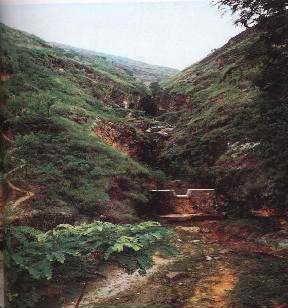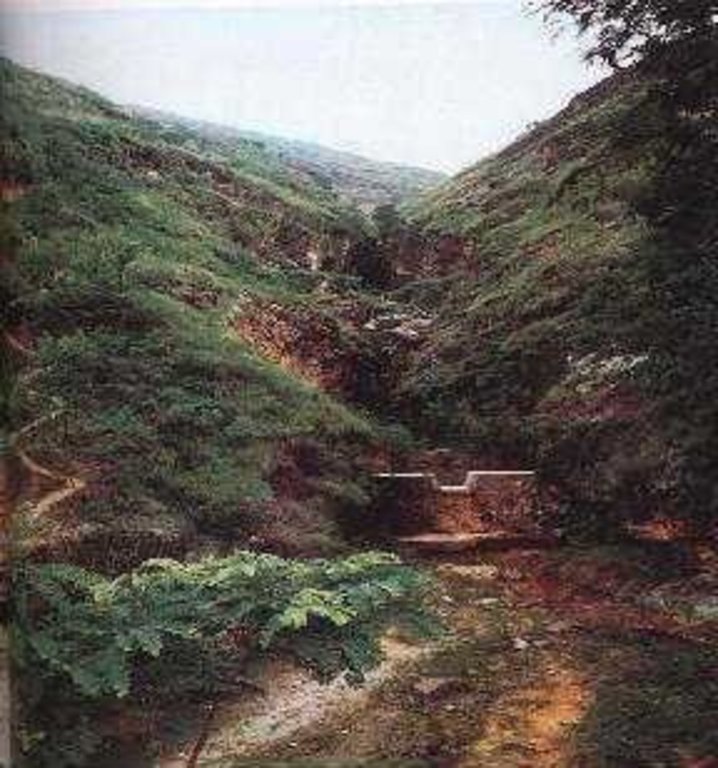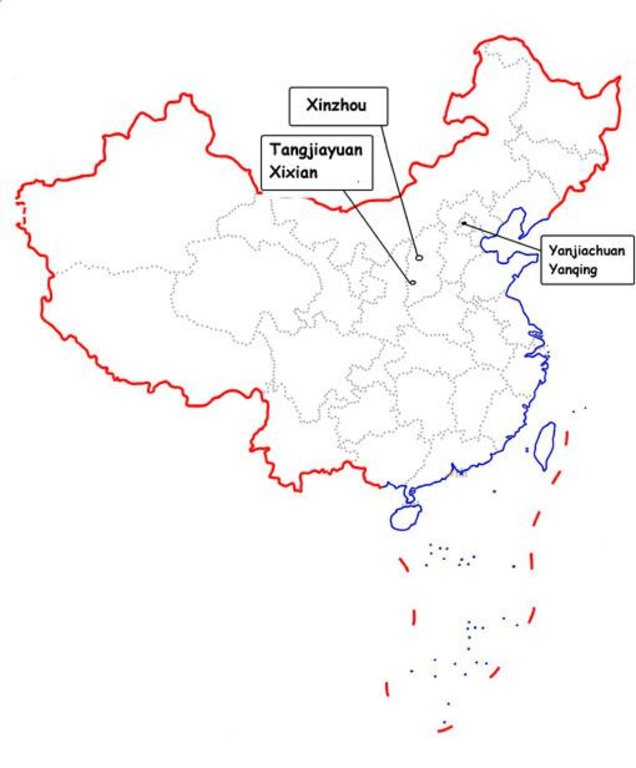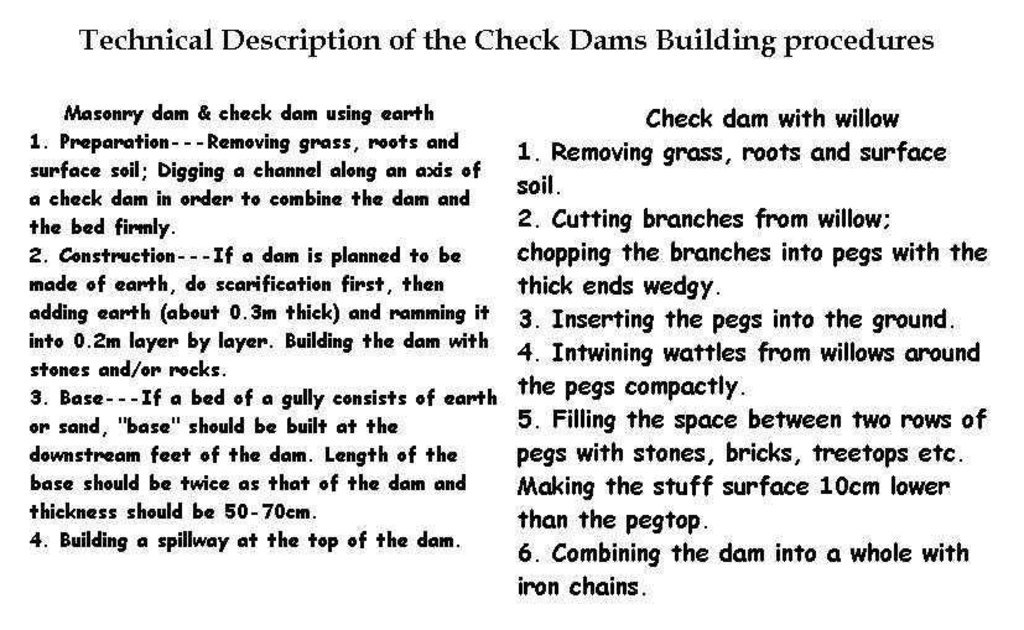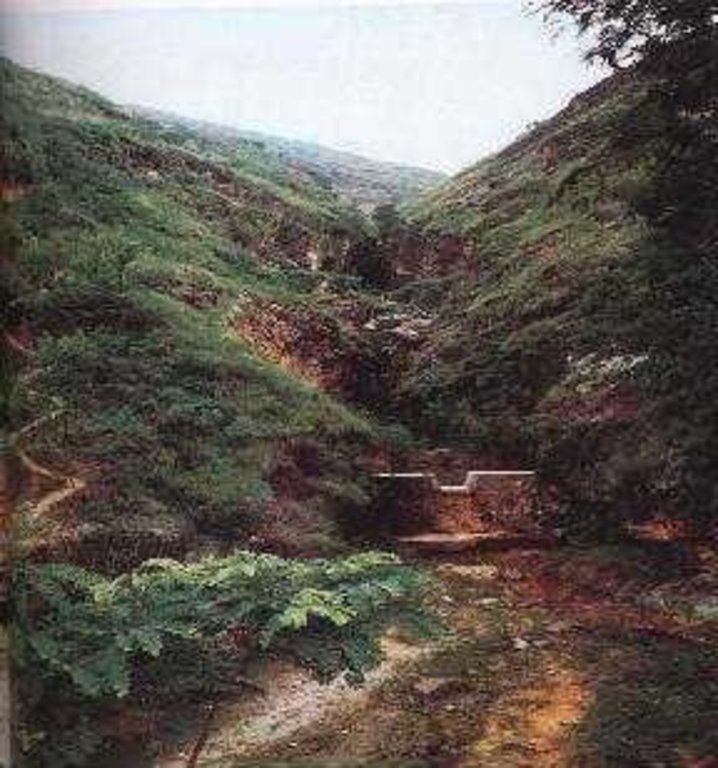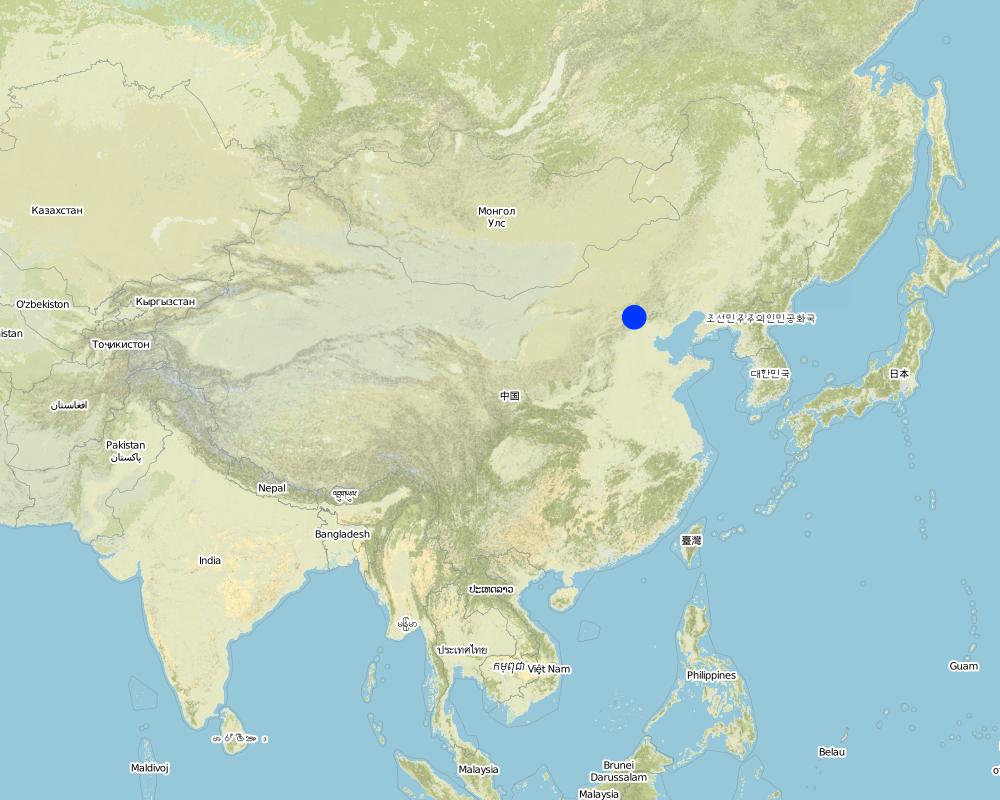Check Dam [China]
- Creación:
- Actualización:
- Compilador: Haiyan WEI
- Editor: –
- Revisor: David Streiff
approaches_2397 - China
Visualizar secciones
Expandir todo Colapsar todos1. Información general
1.2 Detalles de contacto de las personas de referencia e instituciones involucradas en la evaluación y la documentación del Enfoque
Especialista MST:
Nombre de la(s) institución(es) que facilitaron la documentación/ evaluación del Enfoque si fuera relevante)
Department of Resources and Environmental Science, Beijing Normal University (Department of Resources and Environmental Science, Beijing Normal University) - China1.3 Condiciones referidas al uso de datos documentados mediante WOCAT
El compilador y la/s persona(s) de referencia claves aceptan las condiciones acerca del uso de los datos documentados mediante WOCAT :
Sí
1.4 Referencia/s al/los Cuestionario(s) de Tecnologías MST
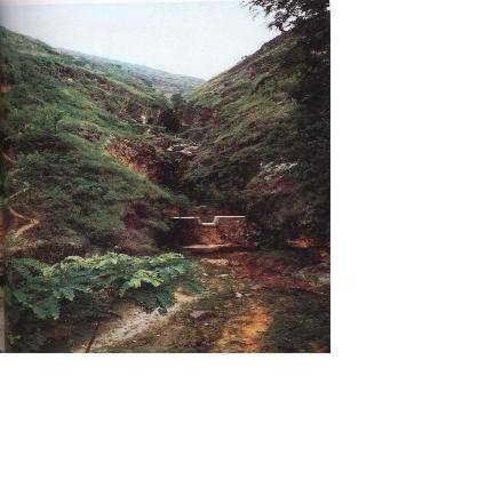
Check Dam [China]
Check dam refers to dam that constructed in the gullies or river ways and the height of the dam is often lower than 5m.
- Compilador: Haiyan WEI
2. Descripción del Enfoque MST
2.1 Breve descripción del Enfoque
Check dam is a kind of sediment storage dam of 5m below and is built in channels to control the down cutting of channel bed.
2.2 Descripción detallada del Enfoque MST
Descripción detallada del Enfoque MST:
Aims / objectives: Xifeng county is one of the key areas of soil erosion control in China. In order to reduce the local soil erosion, and also to bring certain economic benefits to local residents, the Ministry of Water Resources is in charge of check dam construction activities.
Check dam is widely used in controlling soil erosion. The training is a main approach to promotion of the check dam technology. It is necessary to mobilize local people to participate in construction, while providing to them some cash subsidies. In such a way local people can get economic benefits, and strengthen their awareness and
knowledge of soil and water conservation.
Methods: Main objectives: (1) Elevating erosion basis of channel bed to prevent the channel down cutting and channel bank expansion, and decrease channel gradient. (2) Storing silt and reducing the amount of sediment, transported into the rivers. (3) Decreasing channel flow rates and reducing the flood risk of the lower reaches. (4) Debris flow control by use of strong permanent check dams. (5) Making channel silted to form sediment-covered terraces for future use.
Stages of implementation: Implemetation procedure: (1) site selection and design; (2) material preparation, labor recruitment and temporary road buliding; (3) main project construction.
Other important information: The construction cost of check dam is determined by project quality requirements, difficulty of construction, work size, construction technology, and some other factors. Regional factors have also an important impact. Therefore, the investment is mainly made by government with local supporting funds. Check dam construction is often
associated with plant cultivation, aquaculture design and other measures to make comprehensive use of sediment retention and water storage. It can increase agricultural productivity and farmers’ income in addition to improve local environment.
2.3 Fotos del Enfoque
2.5 País/ región/ lugares donde el Enfoque fue aplicado
País:
China
Región/ Estado/ Provincia:
Shanxi, Beijing
Especifique más el lugar :
Xifeng
Map
×2.6 Fechas de inicio y conclusión del Enfoque
Indique año del inicio:
1960
2.7 Tipo de Enfoque
- tradicional/ local
2.8 Propósitos/ objetivos principales del Enfoque
The Approach focused on SLM only
1) Fixation and raise of erosion basis, preventing down cutting of channel and channel bank expansion. 2) Making channel silted to form sediment-covered terraces for farming. 3) Decreasing channel gradient and flow rates and reducing the flood risk of the lower reaches.
The SLM Approach addressed the following problems: 1) Serious debris flow which causes tremendous economic loss and threats to the residents safety. 2) Serious soil erosion, especially down cutting and expansion of gully. 3) Poor local economy, lack of funds and technology for soil erosion control.
2.9 Condiciones que facilitan o impiden la implementación de la/s Tecnología/s aplicadas bajo el Enfoque
normas y valores sociales/ culturales/ religiosos
- impiden
Unawareness of soil and conservation knowledge.
Treatment through the SLM Approach: Strengthening education and training.
disponibilidad/ acceso a recursos y servicios financieros
- impiden
More investment needed for mortar stone check dam.
Treatment through the SLM Approach: Government and company investment to develop eco-industry.
marco de trabajo legal (tenencia de tierra, derechos de uso de tierra y agua)
- impiden
The existing land ownership, land use rights / water rights hindered a little the approach implementation The state has ownership of the land resources, land users can only lease the land for a period of time, they worry about their land would be transferred to others.
conocimiento de MST, acceso a apoyo técnico
- impiden
Check dam design and construction need qualified technicians.
Treatment through the SLM Approach: Professionals and training.
3. Participación y roles de las partes interesadas involucradas
3.1 Partes interesadas involucradas en el Enfoque y sus roles
- usuarios locales de tierras/ comunidades locales
Working land users were mainly men (In 1960s and 1970s, the SWC activities mainly distributed and administrated to farmers to do in leisure time(winter), and grouped to build check dams, terraces, etc
Existing groups of land users;
Those who live in gully areas and have less flat crop land provide their advices and requirement to the government and decision makers.
- gobierno nacional (planificadores, autoridades)
3.2 Involucramiento de los usuarios locales de tierras/ comunidades locales en las distintas fases del Enfoque
| Involucramiento de los usuarios locales de tierras/ comunidades locales | Especifique quién se involucró y describa las actividades | |
|---|---|---|
| iniciación/ motivación | apoyo externo | Mainly:public meetings; partly: workshops/seminars; Series of site meetings to explain the SWC to the land users. |
| planificación | apoyo externo | Mainly: public meetings; partly: workshops/seminars |
| implementación | interactivo | casual labour |
| monitoreo y evaluación | interactivo | Mainly: interviews/questionnaires; partly: reporting; |
| Research | auto-movilización | on-station |
3.4 La toma de decisiones en la selección de Tecnología(s) MST
Especifique quién decidió la selección de las Tecnología/ Tecnologías a implementarse:
- por políticos/ líderes
Explique:
consultative.
Decisions on the method of implementing the SLM Technology were made by by politicians / leaders. directive (top-down).
4. Apoyo técnico, fortalecimiento institucional y gestión del conocimiento
4.1 Construcción de capacidades / capacitación
¿Se proporcionó la capacitación a usuarios de tierras/ otras partes interesadas?
Sí
Especifique quién fue capacitado:
- usuarios de tierras
- extensionists/trainers, politicians/decision makers
Forma de capacitación:
- de agricultor a agricultor
- reuniones públicas
- cursos
Temas avanzados:
The approach provide the training about the technology, such as check dam dimension and materials etc.
4.2 Servicio de asesoría
¿Los usuarios de tierras tienen acceso a un servicio de asesoría?
Sí
Especifique si servicio proporcionado se realizó:
- en los campos de los usuarios de tierras
Describa/ comentarios:
The Basic Farmland Construction; Key elements: Government plan, design, distribute, Farmers implement; 1) Advisory service was carried out through: government's existing extension system 2) Advisory service was carried out through: government's existing extension system; Extension staff: mainly government employees 3) Target groups for extension: land users; Activities: Field visit and demonstration
Advisory service is quite adequate to ensure the continuation of land conservation activities; At each government level, there is a SWC division which is in charge of SWC activities including extension.
4.3 Fortalecimiento institucional (desarrollo institucional)
¿Se establecieron o fortalecieron instituciones mediante el Enfoque?
- sí, moderadamente
Especifique el nivel o los niveles en los que se fortalecieron o establecieron las instituciones:
- local
Especifique el tipo de apoyo:
- financiero
- construcción de capacidades/ entrenamiento
4.4 Monitoreo y evaluación
¿El monitoreo y la evaluación forman parte del Enfoque?
Sí
Comentarios:
bio-physical aspects were ad hoc monitored by 0 through observations; indicators: debris flow frequency,speed,volume, time and damage
technical aspects were ad hoc monitored by 0 through observations; indicators: damage degree
socio-cultural aspects were ad hoc monitored by 0 through measurements; indicators: accredited attitude for debris flow control and part icipation in check dam building.
economic / production aspects were ad hoc monitored by 0 through observations; indicators: control area
area treated aspects were ad hoc monitored by 0 through measurements; indicators: science and rationality of Management
no. of land users involved aspects were ad hoc monitored by 0 through observations; indicators: None
management of Approach aspects were regular monitored by 0 through measurements; indicators: None
There were several changes in the Approach as a result of monitoring and evaluation: Improving the construction method so as to make the check dams much durable.
4.5 Investigación
¿La investigación formó parte del Enfoque?
Sí
Especifique los temas:
- economía/ marketing
- ecología
- tecnología
Proporcione detalles adicionales e indique quién hizo la investigación:
Manual and criteria for standardization design and construction.
Research was carried out both on station and on-farm
5. Financiamiento y apoyo material externo
5.1 Presupuesto anual para el componente MST del Enfoque
Si no se conoce el presupuesto anual preciso, indique el rango:
- 100,000-1,000,000
Comentarios (ej. fuentes principales de financiamiento/ donantes principales):
Approach costs were met by the following donors: government (national): 90.0%; local community / land user(s) (-): 10.0%
5.2 Apoyo financiero/material proporcionado a los usuarios de tierras
¿Los usuarios de tierras recibieron financiamiento/ apoyo material para implementar la Tecnología/ Tecnologías? :
Sí
5.3 Subsidios para insumos específicos (incluyendo mano de obra)
- equipo
| Especifique qué insumos se subsidiaron | En qué grado | Especifique los subsidios |
|---|---|---|
| maquinaria | totalmente financiado | |
Si la mano de obra de usuarios de tierras fue un insumo sustancial, ¿fue:
- pagado en efectivo?
Comentarios:
Before 1970s, the SWC activities were obligation, but after that some subsidies were provided by government.
Labour can also be voluntarely or rewarded with other material support
5.4 Crédito
¿Se proporcionó crédito bajo el Enfoque para actividades MST?
Sí
Especifique las condiciones (tasa de interés el apoyo, amortización, etc.):
Interest rate charged: 2.0%
Interest was lower than market rate.
6. Análisis de impacto y comentarios de conclusión
6.1 Impactos del Enfoque
¿El Enfoque ayudó a los usuarios de tierras a implementar y mantener Tecnologías MST?
- No
- Sí, un poco
- Sí, moderadamente
- Sí, mucho
Harvesting runoff in the rainy season and making 'deposited flat land'.
¿El Enfoque mejoró cuestiones de tenencia de tierra/ derechos de usuarios que obstaculizaron la implementación de la Tecnologías MST?
- No
- Sí, un poco
- Sí, moderadamente
- Sí, mucho
The SWC activities were organized to implement by local communities which can properly deal with the relationship. The problem is likely to be overcome in the near future. The SWC applied area can be contracted for a long time between land ownership and users.
Did other land users / projects adopt the Approach?
- No
- Sí, un poco
- Sí, moderadamente
- Sí, mucho
The method will help to control debris flow; the check dam is widely used
6.3 Sostenibilidad de las actividades del Enfoque
¿Pueden los usuarios de tierras sostener lo que se implementó mediante el Enfoque (sin apoyo externo)?
- sí
6.4 Fortalezas/ ventajas del Enfoque
| Fuerzas/ ventajas/ oportunidades desde la perspectiva del usuario de la tierra |
|---|
| Mitigating damage caused by debris flow and floods (How to sustain/ enhance this strength: Making planning and design on watershed management) |
| Fuerzas/ ventajas/ oportunidades desde la perspectiva del compilador o de otra persona de referencia clave |
|---|
| Erosion control to decrease sediment (How to sustain/ enhance this strength: Check dams building.) |
| More effective use of rainfall resources (How to sustain/ enhance this strength: Develop compound management with cultivation and aquaculture.) |
| Increasing farmer’s income (How to sustain/ enhance this strength: Completing irrigation facility and establishing economic forest) |
6.5 Debilidades/ desventajas del Enfoque y formas de sobreponerse a ellos
| Debilidades/ desventajas/ riesgos desde la perspectiva del usuario de la tierra | ¿Cómo sobreponerse a ellas? |
|---|---|
| After abolition of the compulsory labor and accumulative labor service, the enthusiasm and willingness of farmers to participation is lowered | Some measures shoule be taken by government at all levels to stimulte and encourage farmers to participate in the construction work |
| Debilidades/ desventajas/ riesgos desde la perspectiva del compilador o de otra persona de referencia clave | ¿Cómo sobreponerse a ellas? |
|---|---|
| Large investment. | Multi-level investment system, which includes national investment with local support, labor input by farmers, and use of foreign and social funds. |
7. Referencias y vínculos
7.1 Métodos/ fuentes de información
- compilación de informes y otra documentación existente
7.2 Referencias a publicaciones disponibles
Título, autor, año, ISBN:
Special Planning of Soil and Water Conservation in Xinzhou Region , Shanxi Province (1986-2000)
¿Dónde se halla disponible? ¿Costo?
Library of the Resource and Environmental Department of the Beijing Normal Univ.
Título, autor, año, ISBN:
The application of the Check dam with willow in controlling gully erosion.Tu xingwen. Soil and water conservation in China, 1986.
¿Dónde se halla disponible? ¿Costo?
Library of the Resource and Environmental Department of the Beijing Normal Univ.
Título, autor, año, ISBN:
How to design the dry masonry dam in the Hanjiachuan watershed. Tianyuzhu, Wangzuliang. Beijing. Water conservation in Beijing, 2000.3
¿Dónde se halla disponible? ¿Costo?
Library of the Resource and Environmental Department of the Beijing Normal Univ.
Título, autor, año, ISBN:
Consideration about the check dam design and application. Liu shunzong. Soil and water conservation in China, 1990.6
¿Dónde se halla disponible? ¿Costo?
Library of the Resource and Environmental Department of the Beijing Normal Univ.
Vínculos y módulos
Expandir todo Colapsar todosVínculos

Check Dam [China]
Check dam refers to dam that constructed in the gullies or river ways and the height of the dam is often lower than 5m.
- Compilador: Haiyan WEI
Módulos
No se hallaron módulos


